


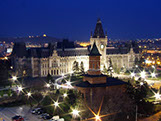
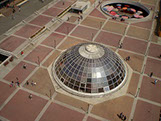



2018 Revival ARA Congress
ROMANIA AT THE GREATER UNION CENTENNIAL ANNIVERSARY
Venue and Accommodation
1. Venue
"Gheorghe Asachi" Technical University, Building A
11A Carol I Boulevard, 700506, Iasi
2. How to Reach the Venue
Iasi county is located in the North-Eastern part of Romania, close to the border with the Republic of Moldova. Iasi, mainly an university city, is the capital of this county, being currently classified as the second Romanian city (321.606 inhabitants).
Iasi could be reached by air, by car or by train.
By air
The easiest way to reach Iasi is by air, the International Airport being located 8 km east of the city center; the taxi (tip included) is 20 RON (4.5 EURO).
Iasi airport http://www.aeroport.ro/destinatii-aeroport/
Iasi airport operates direct flights to 17 foreign destinations (Barcelona, Bologna, Brussels, Catania, Koln, Larnaca, London, Madrid, Milano, Munich, Paris, Rome-Fiumicino, and Ciampino, Tel Aviv, Turin, Venice, Wien) and 3 domestic (Bucharest, Cluj, and Timisoara).
All four operating companies (Tarom, Austrian, Wizzair and Blue Air) offer very attractive prices for early bird booking.
3. Accommodation
More than 20 hotels, very pleasant and in safe locations, offering a very good price/quality ratio are available in Iasi on Booking.com.
Hotel Moldova (3 stars hotel and 1st class restaurant) is recommended. It is placed in the very downtown, at 5 minutes walk distance from the main tourist attractions: Palace of Culture, Palas Mall, Three Ierarchs Church, St. Nicholas Church etc.
http://www.hotelmoldovaiasi.ro/index-eng.htm
For reservation at http://www.hotelmoldovaiasi.ro/rezervari-eng.htm, please mention the word ARA Congress in the space for your name. We have negotiated some unbeatable prices:
195 LEI (42 EURO) for a single room
250 LEI (54 EURO) for a double room (breakfast included) with various free options (Wi-Fi access, guarded parking, a with free access to the World Class swimming pool and fitness club, www.worldclass.ro), located on the hotel ground floor.
Hostel in "Tudor Vladimirescu” campus (no breakfast included).
The rooms have 2 beds, kitchen, bathroom, refrigerator and TV set. Prices are:
75 LEI (double room)
55 LEI (single room)
These rooms are not available for the general public. Prospective solicitants should directly contact Prof. Alexandru Salceanu no later than August 10, 2018, 5:00pm.
Email: asalcean@tuiasi.ro; Phone (also WhatsApp) : +40-721-571-325
4. About Iasi
History
Iasi is one of the oldest and most important settlements in Romania, being the political, economic and cultural centre of the province of Moldavia. Located in the northeastern part of the country, near the border with the Republic of Moldova, Iasi was for many centuries the crossing point of the most important commercial routes linking Poland, Hungary, Russia and Constantinople. The city was the capital of the Principality of Moldavia from 1564 to 1859, then one of the two capitals of the United Principalities from 1859 to 1862, and the capital of Romania from 1916 to 1918.
Even though it is mentioned for the first time in a document in 1408, archaeological investigations shown the presence of human communities on the present territory of the city and around it as far back as the prehistoric age. The document is a grant of certain commercial privileges by the Moldavian Prince Alexander to the Polish merchants of Lvov. Previous settlements include those of the Cucuteni-Trypillian culture, a late Neolithic archaeological culture.
Around 1564, the Moldavian capital has been moved from Suceava to Iasi by Prince Alexandru Lapusneanu. In 1640, Vasile Lupu established the first school in which the Romanian language replaced Greek, and set up a printing press in the Monastery of the Three Hierarchs; built 1635. In 1643, the first volume ever printed in Moldavia was issued in Iasi.
The city was burned down by the Tatars in 1513, by the Ottomans in 1538, and by Imperial Russian troops in 1686. In the XVI-th and XVII-th century the city known an important economic growth.
The city played an important role in building the modern Romanian state! In 1848 here started the bourgeois revolution and the unification of Moldavia and Muntenia in 1959. Between 1564 and 1859, the city was the capital of Moldavia; then, between 1859 and 1862, both Iasi and Bucharest were de facto capitals of the United Principalities of Moldavia and Wallachia. In 1862, when the union of the two principalities was recognized under the name of Romania, the national capital was established in Bucharest. During World War I, Iasi was the capital of a severely reduced Romania for two years, following the Central Powers’ occupation of Bucharest on 6 December 1916.
Architecture
Iasi features historical monuments, 500-year-old churches and monasteries, contemporary architecture, many of them listed on the National Register of Historic Monuments. Notable architecture includes the Trei Ierarhi Monastery, part of the tentative list of UNESCO World Heritage Site, or the neo-Gothic Palace of Culture, built on the old ruins of the medieval Princely Court of Moldavia.
Other significant buildings include:
- Alexandru Ioan Cuza University main building (1897), a mixture of the Neoclassical and Baroque styles, houses the famous Hall of the Lost Footsteps where one can admire the works of the painter Sabin Balasa;
- "Vasile Alecsandri” National Theatre, built between 1894 and 1896 in Neoclassic style with Baroque and Rococo inspired painted and sculpted ornaments;
- Dosoftei House, a building from the second half of the 17th century in which in 1679, the metropolitan bishop Dosoftei settled the second typography in Moldavia. With three façades, arched and right-angled windows, the edifice was restored between 1966 and 1969. It houses the department of old literature of the Romanian Literature Museum;
- Roznovanu Palace (The City Hall), second half of the 18th century, rebuilt between 1830 and 1833, during World War I, it hosted the Romanian government;
- The Union Museum, 1806, Empire style, the palace served as the royal residence of Prince Alexandru Ioan Cuza between 1859 and 1862 and in 1917–1918, during World War I, as the royal residence of king Ferdinand;
- Pogor House, 1850, a meeting place for the city intellectuals, the headquarters of Literary Society Junimea (1863) and of the Convorbiri Literare (Literary Interlocutions) magazine (1867), houses the Romanian Literature Museum;
- Luceafarul Theatre, 1987, a unique modern building in Romania;
- Central University Library, 1934, incorporates Greek Revival elements;
- Great Railway Station, 1870, inspired by Venetian Doge’s Palace.
Economy
Iasi is an important economic centre in Romania. The local and regional economy relies on service sector institutions and establishments. The most important service sectors are related to education, health care, banking, research, culture, government and tourism.
The city is an important information technology sector centre, with the presence of several large multinational companies (Amazon, Oracle, Continental, Xerox, Accenture, Capgemini) and many other local and foreign companies such as Bentley Systems, Bitdefender, Comodo, Endava, Ness, Pentalog, SCC orTiVo (to name a few), as well as two universities which offer specific degree programs. Industry forecasts expect the Iasi ITC workforce to grow from the current 12,000 (as of 2016) employees to more than 33,000, by 2030.
An estimated workforce of more than 35,000 employees is active in Iași’s industrial manufacturing sector, particularly in automotive (Delphi, Lear, Tess Conex), pharmaceutical industry (Antibiotice Iasi), metallurgical production (ArcelorMittal, Technosteel LBR), industrial equipment (Agmus, ASAM, Fortus), energy (E.ON Moldova Distributie, Veolia Energie), textiles and clothing (Benetton, Iasi Conf, Iasitex), home appliances (Tehnoton), building materials (Brikston, Build Corp), food (Compan, Panifcom, Zeelandia).
Located in an area recognised for its vineyards and wines, Iasi is part of a traditional wine region with viticultural centres surrounding the city: Copou, Bucium, Uricani, Comarna, Plugari, and Probota. Iasi County is also home to renowned Cotnari and Bohotin vineyards.
Culture
Major events in the political and cultural history of Moldavia are connected with the name of the city of Iasi. The great scholars of the 17th century, Grigore Ureche, Miron Costin and later Ion Neculce, wrote most of their works in the city or not far from it and the famous scholar Dimitrie Cantemir known throughout all Europe also linked his name to the capital of Moldavia.
The first newspaper in Romanian language was published in 1829 in Iasi and it is in Iasi where, in 1867, appeared under literary society Junimea, the Convorbiri Literare review in which Ion Creanga’s Childhood Memories and the best poems by Mihai Eminescu were published.
Many great personalities of Romanian culture are connected to Iasi: the historian and politic men Mihail Kogalniceanu, the poets Vasile Alecsandri or George Topirceanu, the writers Mihail Sadoveanu, Alecu Russo or Ionel Teodoreanu, the literary critic Titu Maiorescu, the historian A.D. Xenopol, the philosophers Vasile Conta or Petre Andrei, the geographer Emil Racovita, the painter Octav Bancila, or the scientist Stefan Procopiu.
Iasi is home to many museums, memorial houses, art galleries.
First memorial museum from Romania opened in Iasi in 1918, as the Ion Creanga Memorial House, and today the Iasi Romanian Literature Museum owns 14 memorial houses. The Mihai Eminescu Museum, located in Copou Park, is dedicated to the great poet’s life and creation; other museums are dedicated to: Dosoftei, Mihail Kogalniceanu, Vasile Pogor, Nicolae Gane, Petru Poni, Mihail Sadoveanu, George Topirceanu, Otilia Cazimir, Cezar Petrescu.
The Union Museum, includes original pieces and documents which belonged to prince Al. I. Cuza and his family.
The Natural History Museum, founded on 4 February 1834, is the first museum of this kind in Romania with over 300,000 items, the most valuable being the collections of insects, mollusk, amphibians, reptiles, birds, plants and minerals.
Four other museums are located in the Palace of Culture: with its roots dating back to 1860, the Iasi Art Museum is the oldest of its kind in Romania and, with more than 8,700 works (many of them belonging to the universal patrimony), has the largest art collection in the country; the Moldavia’s History Museum, offers more than 48,000 objects from various fields, archaeology, numismatics, decorative art, ancient books, documents; the Ethnographic Museum of Moldavia owns more than 13,000 objects depicting the Romanian advance through the ages; the Science and Technology Museum’s collection has more than 11,200 objects in five distinct sections and one memorial house.
Education
The first institute of higher learning that functioned on the territory of Romania was Academia Vasiliana (1640) founded by Prince Vasile Lupuas a „higher school for Latin and Slavonic languages”, followed by the Princely Academy in 1707.
The first high education structure in Romanian language was established in the fall of 1813, when engineer Gheorghe Asachi laid the foundations of a class of engineers, its activities taking place within the Greek Princely Academy.
After 1813, other moments marked the development of higher education in Romanian language, regarding both humanities and the technical science. In 1835, Academia Mihaileana founded by Prince Mihail Sturdza is considered first Romanian superior institute in the country.
In 1860, three faculties part of the Academia Mihaileana formed the nucleus for the newly established University of Iasi, the first Romanian university.
The Physicians and Naturalists Society, founded in Iasi, has existed since the early part of the 19th century, and a number of periodicals are published. One of the oldest medical universities in Romania, founded in 1879, is in Iasi. It is now known as the Grigore T. Popa University of Medicine and Pharmacy.
In 1937, the two applied science sections of the University of Iasi became departments of the newly created Gheorghe Asachi Polytechnic School. In the period before and after World War II, the later (renamed Polytechnic Institute in 1948) extended its domain of activity, especially in the field of engineering, and became adopted a Technical University in 1993.
Public universities include:
- Alexandru Ioan Cuza University– located in Copou, is the oldest higher education institution in Romania;
- Gheorghe Asachi Technical University – the school with the oldest engineering tradition in Romania;
- Grigore T. Popa University of Medicine and Pharmacy – one of the oldest medicine schools in Romania;
- George Enescu University of Arts – the oldest tradition in music and arts education in Romania;
- Ion Ionescu de la Brad University of Agricultural Sciences and Veterinary Medicine – one of the oldest schools of its kind.
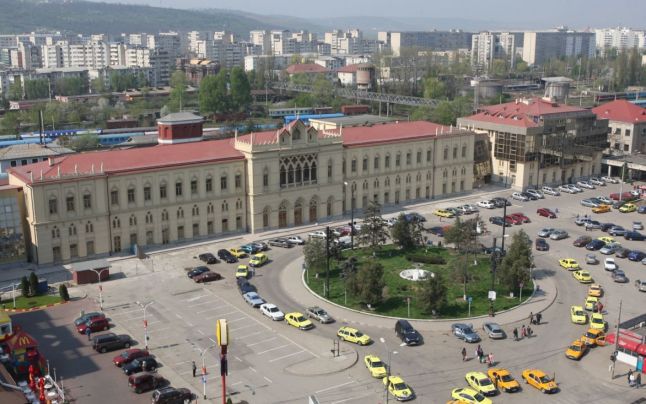

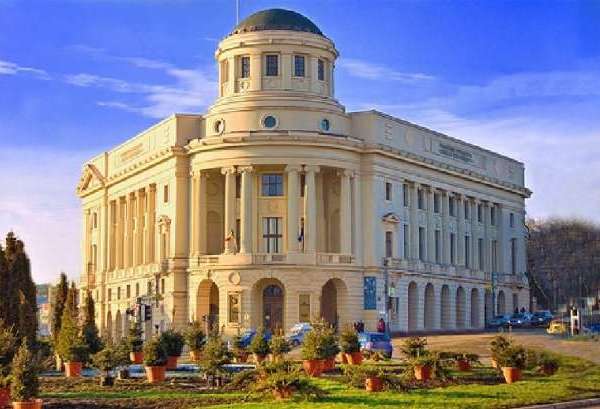

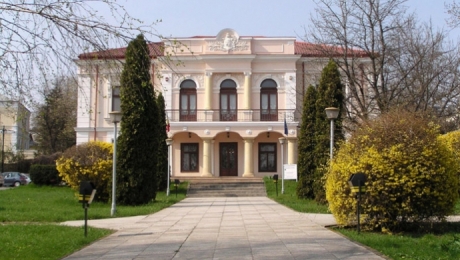


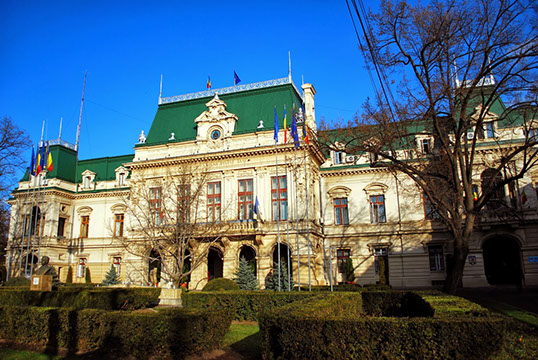


Great Railway Station
"Vasile Alecsandri” National Theatre
Central University Library
Dosoftei House
Pogor House
Alexandru Ioan Cuza University
The Union Museum
Roznovanu Palace (The City Hall)
Luceafarul Theatre
Grigore T. Popa University of Medicine and Pharmacy
10 - 10
<
>





